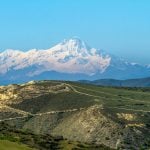The Highest Mountains of Russia
Russia is a vast country with diverse mountainous regions that vary in geographical features. In the northwest, the Ural Mountains form the boundary between Europe and Asia, characterized by moderate heights and gentle slopes. The Urals are rich in minerals and have played a significant role in Russia’s industrial development. In the south, the Caucasus Mountains feature high peaks and volcanic activity, with Mount Elbrus standing at 5,642 meters as Russia’s highest point and Europe’s highest summit. In the east, Siberia encompasses the Sayan Mountains, Altai Mountains, and volcanic ranges in the Kamchatka Peninsula. These areas are known for their towering peaks, deep valleys, glaciers, and vast steppes, boasting rich biodiversity. Russia’s mountainous regions contribute to its diverse and unique geographic landscape, characterized by abundant natural resources and cultural heritage.
Mount Elbrus
Part of the Caucasus Mountains, Mount Elbrus is the highest peak in Russia and Europe, standing at 5,642 meters. Elbrus has two summits: the Western Summit (5,642 meters) and the Eastern Summit (5,621 meters). It is a dormant volcano that formed approximately two million years ago. While climbing Elbrus is not technically very difficult, its altitude and weather conditions present significant challenges. Each year, hundreds of climbers aim to reach its summit.
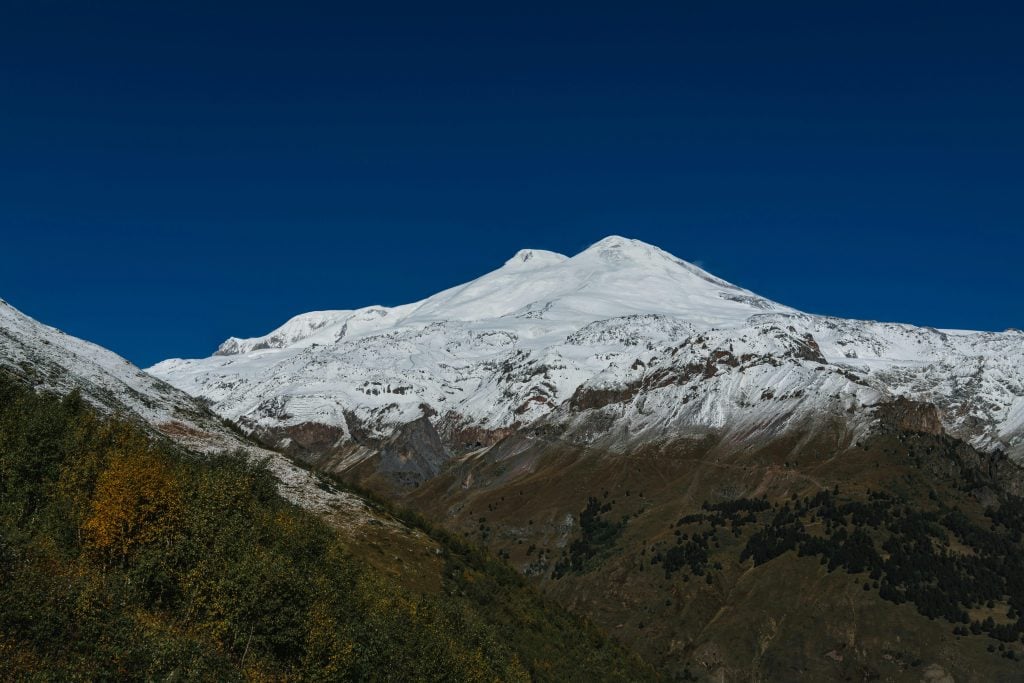
Mount Dykh-Tau
Dykh-Tau Mountain, standing at 5,205 meters (17,077 feet), is the second-highest peak in the Caucasus Mountains, located in Russia’s Kabardino-Balkaria Republic. This formidable peak is renowned for being one of the most challenging and perilous climbs in the Caucasus region. Its name, derived from the Balkar language, means “Big Mountain,” reflecting its imposing presence with steep slopes, glaciers, and rugged cliffs. The first successful ascent of Dykh-Tau was achieved in 1888 by Albert Mummery and Heinrich Zurfluh. Today, it remains a coveted and respected objective for experienced climbers. Reaching the summit requires advanced technical climbing skills and excellent physical conditioning, attracting adventurers seeking a formidable challenge. The harsh weather conditions and treacherous terrain of the region further complicate the ascent, but the breathtaking views from the summit, showcasing the majestic Caucasus landscape, offer a rewarding experience for those who conquer its heights.
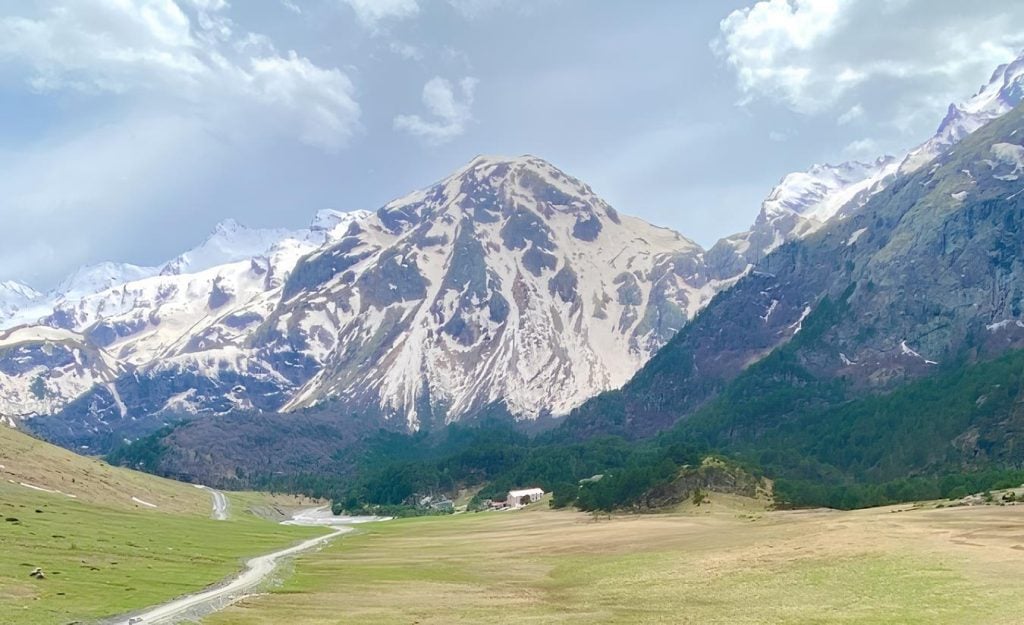
Shkhara Mountain
Mount Shkhara is the highest peak in Georgia, standing at 5,193 meters above sea level and located in the main ridge of the Caucasus Mountains. It is one of the most impressive natural formations in the region, revered both for its height and its stunning beauty. Mount Shkhara holds significant cultural and historical importance in Georgia, symbolizing the country’s rich heritage. For climbers, it is a prestigious goal, offering a challenging ascent and breathtaking views from its summit. The surrounding area supports a diverse ecosystem, hosting numerous endemic plant and animal species. Villages and pastures dotting the foothills of Mount Shkhara provide visitors with a glimpse into traditional Georgian life amidst spectacular natural surroundings.
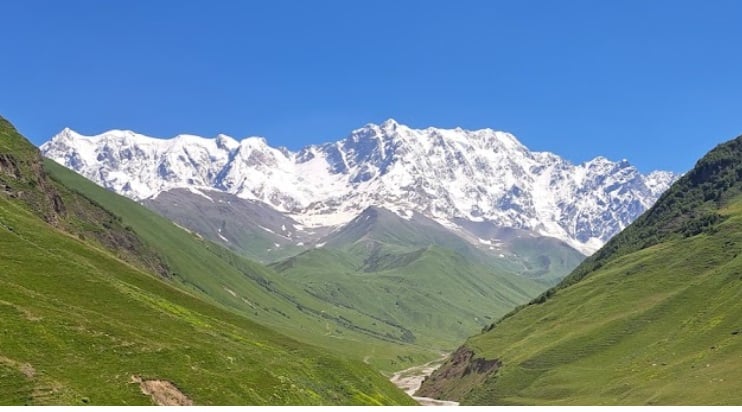
Mount Kazbek
Mount Kazbek, also known as Mkinvartsveri in Georgian, is a prominent peak in the Caucasus Mountains, standing at 5,047 meters above sea level. Located on the border between Georgia and Russia, it holds great significance both geologically and culturally. Kazbek is steeped in mythology, believed by some to be the place where Prometheus was chained in Greek mythology. The mountain is crowned with a glacier and its distinctive cone-shaped summit is a challenging yet popular destination for climbers and adventurers. Surrounding Kazbek are lush valleys and alpine meadows, providing habitat for a variety of wildlife including the Caucasian tur and chamois. Its proximity to the Georgian Military Highway makes it accessible from Tbilisi, the capital of Georgia, attracting not only mountaineers but also tourists interested in its natural beauty and cultural heritage.
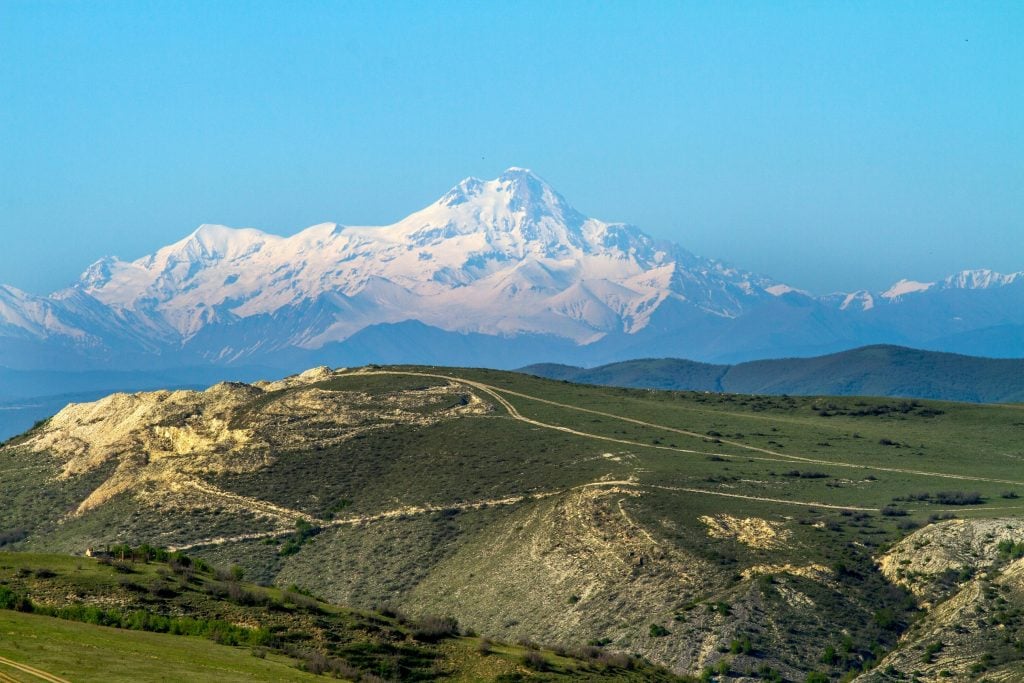
Mount Pushkin Peak
Pushkin Peak, at 5,100 meters, is another significant peak in the Caucasus Mountains. Named after the famous Russian poet Alexander Pushkin, this mountain is a respected target within the climbing community, offering various technical routes. Reaching the summit of Pushkin Peak is often a goal for experienced mountaineers and requires extensive preparation.
Mount Ushba
Ushba Mountain, located in the Caucasus Mountains of Georgia, is a striking peak renowned for its dramatic beauty and challenging ascent. Standing at 4,710 meters (15,453 feet) high, Ushba is notable for its twin summits and sharp rocky ridges, earning it nicknames such as the “Caucasian Matterhorn” or “Caucasian Annapurna.” The mountain is a coveted destination for climbers due to its technical difficulties and stunning alpine scenery. Surrounding Ushba, the valleys and alpine meadows not only support a diverse range of flora and fauna but also provide livelihoods for local communities. Historically and culturally significant, Ushba Mountain is a symbol of Georgia’s natural heritage and a prominent feature in the Caucasus landscape, attracting adventurers and nature enthusiasts alike.
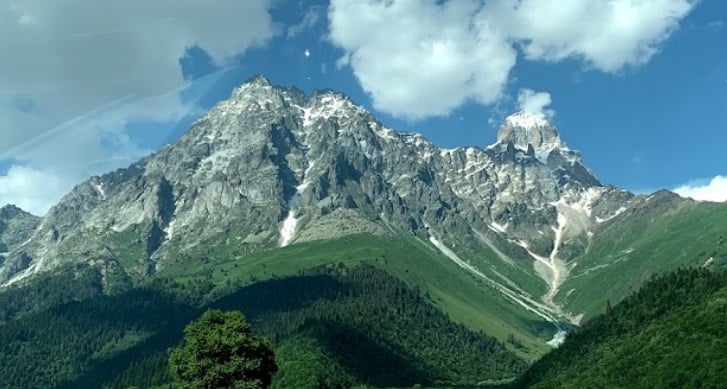
Peaks of Nature
Russia’s mountains are not only remarkable for their height but also for the natural beauty and technical challenges they offer. Mount Elbrus, Dykh-Tau, Shkhara, Kazbek, and other peaks attract climbers and nature lovers from around the world every year. These mountains are not only significant to Russia but also to the global mountaineering community. Russia’s highest peaks showcase the power and beauty of nature and remain a source of adventure waiting to be explored.
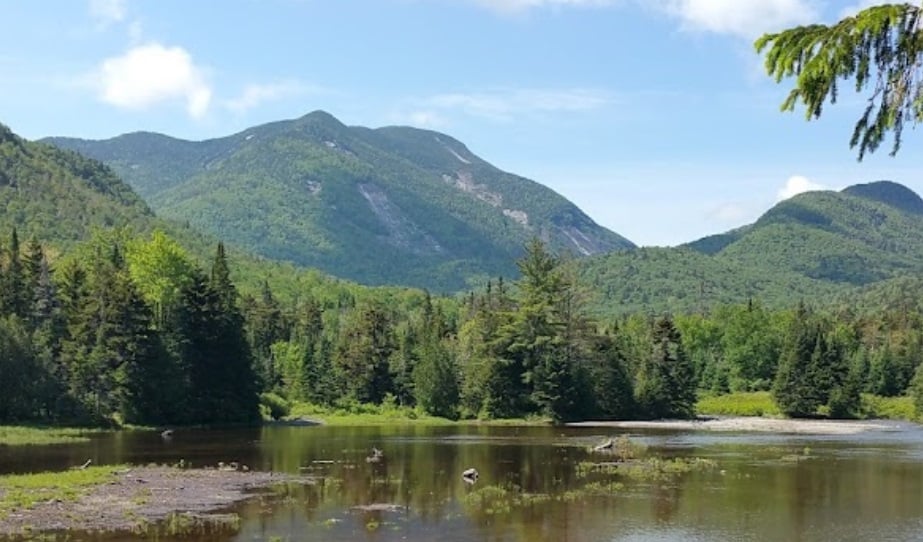
All About Russia
The Russian Federation (Росси́йская Федера́ция, Rossiyskaya Federatsiya), commonly known as Russia (Rossiya), is a transcontinental country extending over much of northern Eurasia (Asia and Europe).




